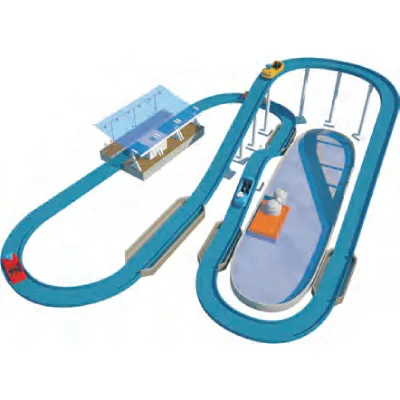- Albanian
- Arabic
- Belarusian
- Bengali
- Czech
- English
- French
- German
- Hebrew
- Hungarian
- Indonesian
- irish
- Italian
- Japanese
- kazakh
- Persian
- Russian
- Thai
- Uzbek
- Vietnamese
Innovative Approaches to Roller Coaster Design and Engineering Techniques
The Thrilling Art of Roller Coaster Design
Roller coasters have long captivated the imagination of thrill-seekers and amusement park enthusiasts alike. The adrenaline rush of ascending dizzying heights, the heart-pounding drops, and the exhilarating twists and turns are just a part of what makes roller coasters so popular. However, the magic of roller coasters goes beyond mere entertainment; it lies in the intricate design and engineering that transform ideas into reality.
At the heart of roller coaster design is the challenge of balancing excitement with safety. Engineers and designers must consider a plethora of factors, including speed, height, track layout, and the numerous forces acting on riders during the ride. The design process starts with a concept, often inspired by themes, stories, or unique experiences that aim to transport riders into a different world. For instance, Universal Studios might create a coaster based on a popular movie, integrating storytelling elements into the ride experience.
The Thrilling Art of Roller Coaster Design
Material selection is another critical aspect of roller coaster design. Steel coasters, known for their smooth rides and flexibility, allow for intricate designs and higher speeds. Conversely, wooden coasters offer a nostalgic experience with their classic aesthetics and unique vibrations. Some modern hybrids merge the best of both worlds, combining the smoothness of steel with the charm of wood. Each material comes with its advantages and challenges, and the choice can significantly affect the ride experience.
roller coasters design

Track layout is where creativity thrives. Designers often experiment with inversions—loops, corkscrews, and vertical drops—which not only add excitement but also test the limits of gravity and inertia. The introduction of elements like airtime hills, where the coaster temporarily leaves the track, creates thrilling weightlessness, enhancing the overall experience. A well-designed coaster keeps riders guessing with unexpected drops and turns, ensuring that no two moments feel the same.
However, designing roller coasters involves more than just thrills; it requires extensive safety protocols. Engineers work closely with safety regulations and guidelines to ensure that every ride can withstand the loads and forces exerted on it. Testing is a significant part of the process; before a roller coaster opens to the public, it undergoes rigorous trial runs to identify any potential issues. This phase helps to fine-tune the ride experience, ensuring that all safety measures are in place.
Moreover, aesthetics play a crucial role in roller coaster design. The visual impact of a coaster can draw in crowds and create a lasting impression. Designers often incorporate thematic elements that enhance the overall atmosphere of the park. Bright colors, intricate sculptures, and strategic lighting can transform a simple structure into an iconic attraction that tells a story and engages the audience long before they step onto the ride.
Finally, the experience of riding a roller coaster is often about the emotional journey it provides. The design must evoke a range of feelings—from excitement and fear to joy and exhilaration. The interaction between the rider and the environment, the anticipation built during the climb, and the release during the descent all contribute to this unique emotional experience.
In conclusion, roller coaster design is a fascinating blend of engineering, art, and psychology. It involves the careful consideration of safety, thrills, material choice, and aesthetics—a complex process that culminates in a ride that delights and terrifies all at once. As technology and creativity continue to evolve, the future of roller coasters promises to be even more exciting, pushing the limits of what is possible in the world of amusement park rides. The next time you buckle up for a thrilling ride, take a moment to appreciate the intricate design behind the thrill of roller coasters.
-
Flume Ride-Hebei Zhipao Amusement Equipment Manufacturing Co., Ltd.|Thrilling Water Attraction&Customizable DesignJul.30,2025
-
Flume Ride - Hebei Zhipao Amusement Equipment | Water Coaster, Thrilling DescentJul.30,2025
-
Flume Ride - Hebei Zhipao | Thrilling Water AttractionJul.30,2025
-
Flume Ride: Thrilling Water Attraction by Hebei Zhipao|Log Flume Manufacturers&Flume Ride DesignJul.30,2025
-
Flume Ride-Hebei Zhipao Amusement Equipment Manufacturing Co., Ltd.|Thrilling Water Coaster, Safe DesignJul.30,2025
-
Flume Ride-Hebei Zhipao Amusement Equipment Manufacturing Co., Ltd.|Thrilling Water Attraction, Safe DesignJul.30,2025
